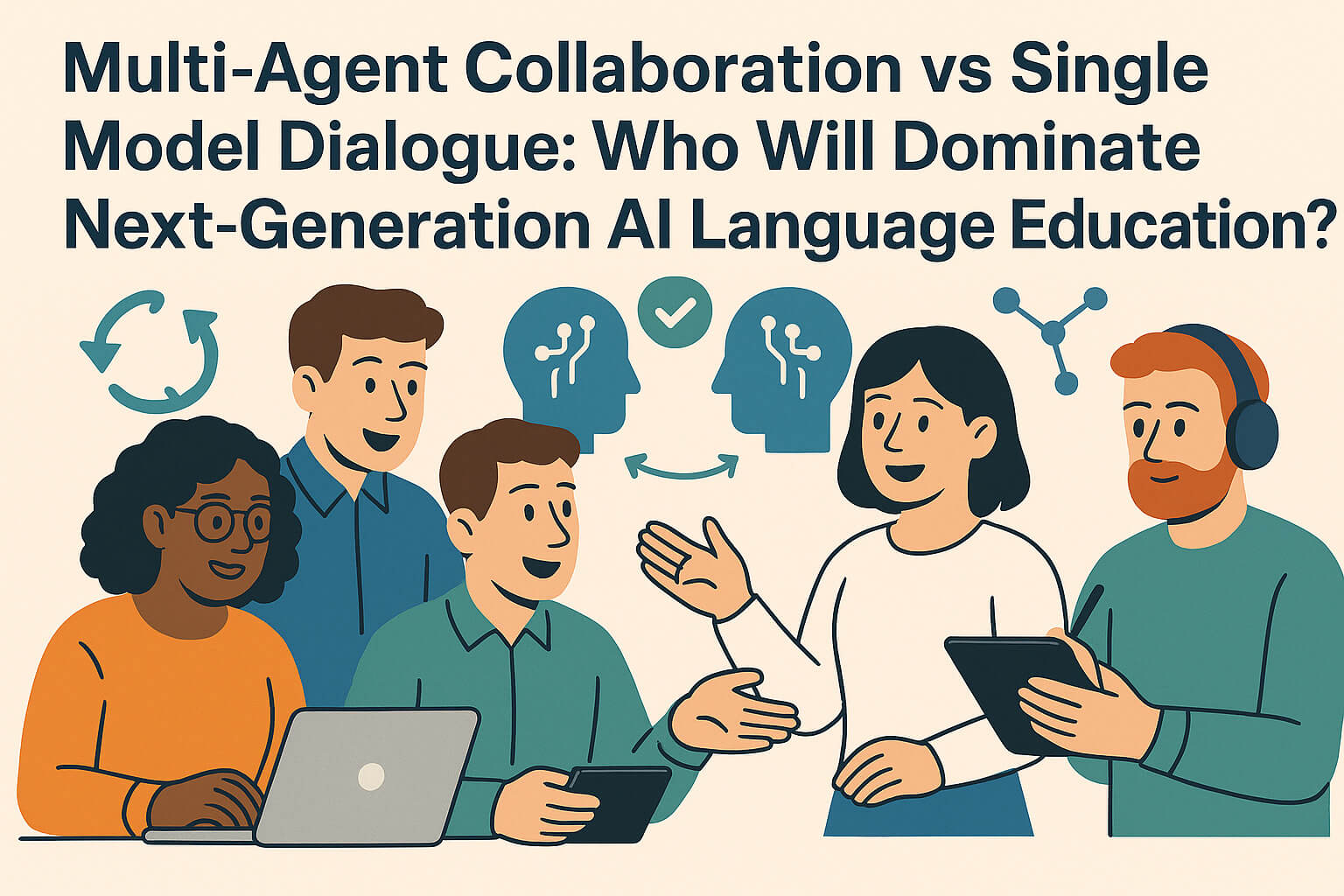
In-depth analysis of differences between multi-agent collaboration and single AI models in language education. Explores how TalkiT's innovative multi-agent architecture solves language quality, safety, and teaching effectiveness issues in AI English conversation training, achieving complete learning experiences from AI dialogue to real human interaction, leading next-generation intelligent language education development.
AI language education, multi-agent collaboration, AI English conversation training, intelligent language learning, TalkiT, AI dialogue system, language learning AI, online English speaking practice, AI English coach, artificial intelligence education, Native Speaker conversation
As AI technology rapidly develops in the language learning field, a key question is emerging: traditional single AI model dialogue or emerging multi-agent collaborative architecture—which can better meet language learners' needs?
Limitations of Single AI Models
Most AI language learning products currently on the market adopt single model architectures. While this approach is simple and direct, it exposes several problems in practical applications:
Unstable Dialogue Quality
-
Grammar errors occur frequently
-
Unnatural register switching
-
Lack of targeted teaching feedback
Difficult to Guarantee Safety
-
Single models struggle to comprehensively monitor content safety
-
Limited capability in handling sensitive topics
-
Lack of multi-layered safety checking mechanisms
Limited Teaching Effectiveness
-
Unable to adjust dialogue difficulty according to learning objectives
-
Lack of systematic learning guidance
-
Relatively single feedback mechanisms
As one expert user feedback stated: "GPT can understand what I say, but lacks targeted feedback and doesn't point out expression problems, making it easy to fall into a state of 'feeling good about oneself.'"
TalkiT's Multi-Agent Collaboration Technical Advantages
TalkiT adopts an innovative multi-agent collaborative architecture, solving traditional single model pain points through four specialized agents working together:
- Language Quality Agent
Specifically responsible for ensuring dialogue language quality:
-
Grammar accuracy checking
-
Expression fluency optimization
-
Register adaptation adjustment
- Context and Character Consistency Agent
Ensures dialogue coherence and authenticity:
-
Natural scene transitions
-
AI character consistency maintenance
-
Accurate contextual understanding
- Teaching Guidance Agent
Provides professional learning instruction:
-
Adjusts dialogue difficulty based on user level
-
Provides timely learning feedback
-
Personalized learning suggestions
- Safety and Compliance Agent
Comprehensively safeguards learning environment safety:
-
Content safety monitoring
-
Sensitive topic identification and handling
-
Minor protection mechanisms
Real Changes Brought by Technical Architecture
This multi-agent collaboration is not just technical innovation, but more importantly brings actual learning experience improvements:
More Natural Dialogue Experience
Each agent performs its duties, ensuring generated dialogues are both naturally fluent and educationally valuable. Users no longer need to worry about AI saying inappropriate content or providing incorrect grammar examples.
Personalized Learning Guidance
The teaching guidance agent dynamically adjusts dialogue difficulty and topic selection based on users' learning progress and performance, making each practice session targeted.
Safe and Reliable Learning Environment
Multi-layered safety checking mechanisms ensure users practice speaking in a safe environment, which is especially important for minor learners.
Seamless Transition from AI Dialogue to Human Interaction
TalkiT not only innovates in AI dialogue but also achieves natural transition from AI learning to human interaction through Native Speaker functionality. This "AI + Human" hybrid mode is redefining the complete path of language learning.
Users can first build foundations and confidence through multi-agent collaborative AI dialogue, then naturally transition to real-time voice conversations with Native Speakers. This progressive learning approach is particularly suitable for learners who are "afraid of long conversations with real foreigners."
Industry Development Trends: Technical Quality Becomes Key to Competition
As users increasingly demand safety and reliability in AI education products, technical capability is becoming an important factor in product competition. Simple feature stacking can no longer meet user needs; the advancement and systematicity of technical architecture have become core competitive advantages.
TalkiT's practices in multi-agent collaboration and data protection reflect next-generation AI language learning products' emphasis on technical quality. This technology-supported education product model may become a development trend in the AI education field.
Giving Everyone the Opportunity to Speak and Be Heard
As TalkiT's brand mission states: "Give everyone the opportunity to speak, be heard, and go further." Through advanced multi-agent technical architecture, TalkiT not only provides superior AI dialogue experiences but also creates complete pathways from AI learning to real human communication through Native Speaker functionality.
Whether through multi-agent collaborative AI dialogue or real conversations with Native Speakers, TalkiT uses technology to lower barriers and dialogue to improve efficiency, making language learning simpler and more effective.
This is the direction of next-generation AI language education: not simple feature stacking, but systematic technical innovation; not isolated AI dialogue, but complete learning experiences connected to the real world.
Want to experience multi-agent collaborative AI dialogue? Download TalkiT now and start your intelligent language learning journey.